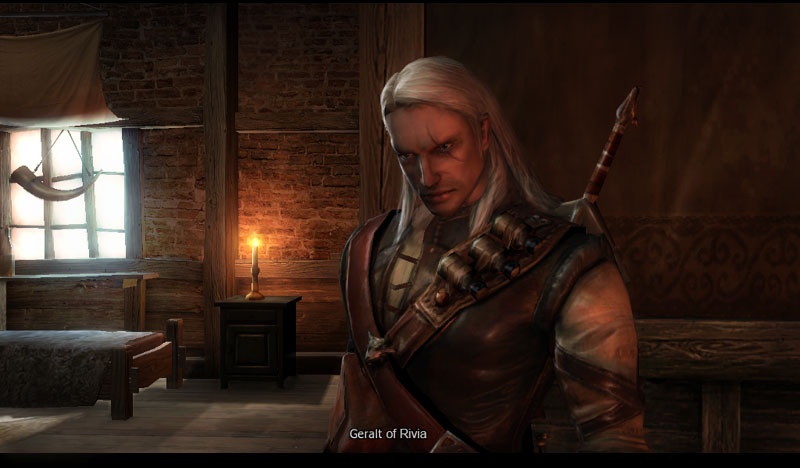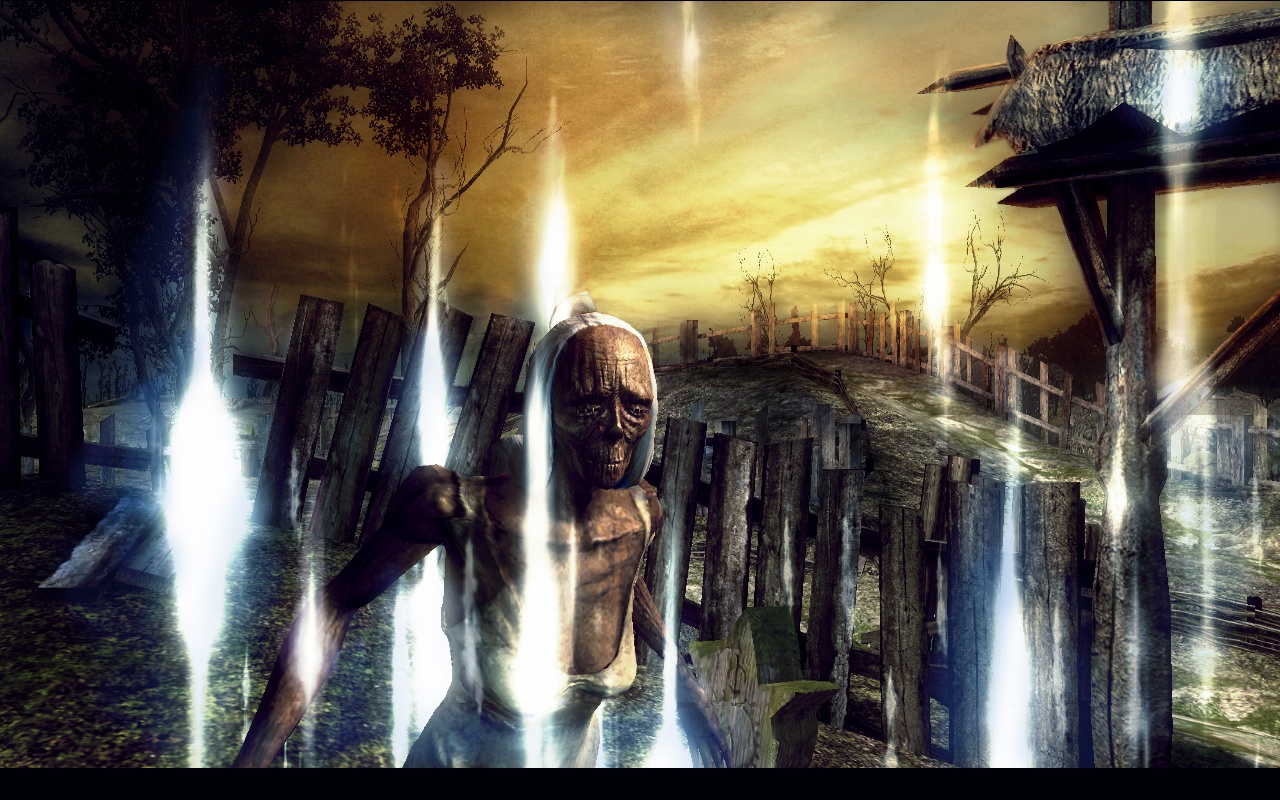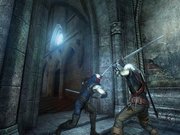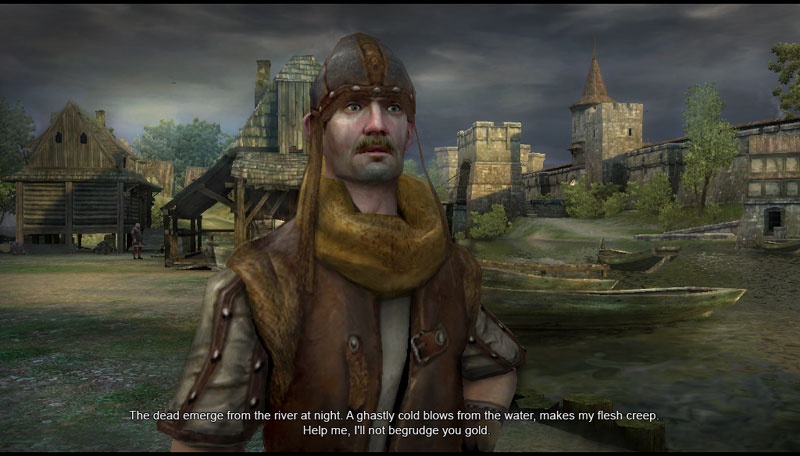The Witcher Hands-On - Story, Character Interaction, and Boss Battles
CD Projekt's dark and dangerous RPG is nearing completion, and we went to Poland to get an updated look at the game.
Since our first time spent with The Witcher at E3 back in 2004, its promise of a gritty and realistic fantasy game has intrigued us. Although the game's been in development for longer than was first anticipated, Polish developer CD Projekt recently signed a publishing deal with Atari, and the game is now slated to ship later this year.

Previous coverage of the game has highlighted some of The Witcher's combat and decision-making aspects, but in a recent trip to the studio in Warsaw, we got some respectable hands-on time with the latest version and adventured through three other distinctive sections of the game.
The first section was near the beginning of the game, with some cutscenes that set out the story. The lead character is Geralt, a witcher--a character trained from childhood in the art of combat and endowed with some magical powers. According to the game's fiction, witchers used to be part of a long-standing institution whose members would traditionally kill monsters in return for money, but because the sorcerers who knew how to create them are extinct, they are now a dying breed.
Geralt himself has been missing for a couple of years prior to the game's opening, which sees him found lying in the forest by some fellow witchers. Laid on a cart, he's taken back to Kaer Morhan, an old castle which serves as their base of operations; but before we find out why Geralt's been absent for so long, the castle is attacked.
The battle that ensues serves as a useful tutorial for the game's combat. Most actions are performed with either the left or right mouse button, including basic attacks and follow-up combinations. Geralt starts out with a pretty bare set of talents, but as you progress through the game, you'll be able to develop his skills considerably--although you'll have to pick and choose, as it's not possible to max them all out.
After you fight alongside the other witchers to take down some of the oncoming henchmen, one of the walls blasts open to reveal a huge monster and a mage. The monster is less of a concern, because witchers are trained to fight beasts, but their magic is no match for that of a mage.
Speaking of magic, there are several different types, relating to specific "signs." These can produce fire effects, which can be helpful when attacking; a shield, which protects you from harm but prevents you from inflicting damage; and a stun, which can lead to one-hit kills in the right circumstances.
Witchers can also drink potions to heal or strengthen themselves, but these substances are highly toxic, and you can drink only a limited number before you'll start losing health. It's possible to track this with a toxicity meter, though, and there are antitoxin potions that will reduce this level--while also canceling any positive effects you're currently experiencing.
Before taking on either the creature or the mage--which we tried out later on--we fast-forwarded some way into the game to pursue those responsible for the attack on the castle. Our journey brought us to a village just outside the city of Vizim, which looked a little run down. The villagers seemed to be getting on with their own lives, and it was possible to walk up and speak to anybody.
In fact, interacting with even the background characters dotted around the place can be vital, as they can give you clues or new quests, a bit like in The Elder Scrolls IV: Oblivion. One peasant woman we spoke to complained that she had no food for her children, so we offered her some bread. As thanks, she went on to tell us more about her story, which gave us some further insight to the world around us, including a hint about a quest we were on.

All the game's quests are tracked in a journal, which keeps you informed about those you are on, and where you'll need to go next to continue. For the specific mission we were on, we needed to pay a visit to a riverside shack, where the leader of a local bandit group was residing. We'd previously learned that he had information on our quarry, but first, we'd need to gain his trust. So, a simple trip further down the river to dispatch some monsters that had been causing his trade business some issues was in order.
Racism, seduction, and a whole lot more
The actual encounter turned out to be more complicated, however, because no sooner had we killed the monsters than some elves turned up. Unlike in other games set in a fantasy world, elves and humans do not get along in The Witcher. In fact, the elves have been persecuted so thoroughly here that they have almost all disappeared, and those that remain pursue a hard-line political vendetta against the humans, perpetuating the ill will by perpetrating acts of terrorism on so-called innocents.

Their appearance at the riverside was therefore something of a surprise. After talking to their leader, we learned that the bandit boss we were helping was involved in some shady dealings with the elves, so we then had to choose whether or not to get involved in the transaction ourselves. This is a good example of how your decisions in the game can have a variety of consequences, with some actions yielding short-term gains but making things more difficult in the long run, and vice versa.
After following through on this quest, we went back to the village, where we spoke to another peasant woman, who bemoaned the general lack of attention being paid to her. We gave her some flowers to cheer her up, and she responded very positively. In fact, the implied result was a physical relationship, although this was represented only with the awarding of a collectible card--there are a number of these to find through the game, though not all relate to the seduction of peasant women.
Moving forward in the game once more, we followed some clues to a graveyard and found some half-eaten corpses. We battled a few zombies before chancing upon one who could actually speak. This one alerted us to the presence of some elves, apparently holding some townsfolk hostage. Upon further investigation we discovered the elves outside a crypt which held townsfolk about to be killed by a zombie, and we were faced with another difficult choice: killing the elves, or rescuing the peasants. This was another one of those choices for which we had to carefully consider the consequences.
Finally, we returned to the early scene at Kaer Morhan, to sample the boss battle section there. Following the attack on the castle we needed to choose whether to tackle the monster or the mage. Luckily, we had a chance to try out both fights--although you'd normally have to reload the game if you wanted to try each alternative. From what we could tell, these significant fights are more involved than the regular ones, and they contain deeper tactical considerations. Without divulging any spoilers, we'll say that you'll need to work out what your opponent's weaknesses are, and straightforward hacking won't always get you very far.
Visually, the game is looking really nice at the moment. We've talked a little bit before about the licensed BioWare engine, and CD Projekt has clearly worked hard to get the most out of it. The scenery is in turns lush, eerie, and atmospheric, with realistic weather effects and a lovely day-night cycle. From what we saw, very little of the game uses recycled graphics, so the different locations each have a unique feel to them.

At this stage of development there's still some work to be done on the voice acting, which, for a game that focuses squarely on an immersive storyline, is pretty important. However, the music seems to be mostly in place, and based on the few hours we spent with the game the score sounds impressive.
Overall, the game seems to be a promising action RPG as CD Projekt looks forward to a release later this year. What's clear is that the world of The Witcher is a complex place, with real-world themes and consequences for your actions and decisions. These themes, such as racism and persecution, as well as the political backdrop, should add some real meaning to your choices, while the brooding atmosphere will hopefully help emphasize an engaging story. Check in with GameSpot for more coverage on The Witcher between now and the game's release this fall.
Got a news tip or want to contact us directly? Email news@gamespot.com
Join the conversation